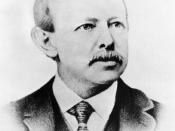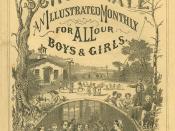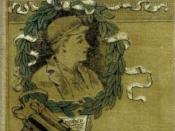Although the message completely conflicts, prose of Alger's "Ragged Dick," and Twain's, "Story of the Bad Little Boy" mirror each other schematically. These two works are comparable in that the moral of the story is displayed through description, and use of anecdote.. The major contrasting element between these two works is that morality is viewed completely different between the two texts. Twain and Alger's use of specific anecdotes convey their respective message. These two stories compare and contrast to make a formidable argument as to what exactly morality should mean.
Comparing the two works is a matter of examining schematics of each story. In "Ragged Dick," displays a novel that is relatively much longer than the short prose, "Bad Little Boy." These two stories share two things in common; in that 1) The two both have a moral in the end. 2) Both use anecdotes to set up the reader into receiving a believable moral at the end.
Anecdotes are short brief sub stories that summarize a particular instance.
In "Ragged Dick" there is an idea that good things happen to kind hearted people is ingrained as a moral throughout the story. Alger takes an anecdote to display this notion. While on the search for better-paying and more respectable jobs, Dick takes a trip on the ferry to Brooklyn. En route, a young boy falls into the river, and the father swears great rewards to the rescuer. Dick, an excellent swimmer, dives off the ferry and saves the boy. The father turns out to be James Rockwell, a wealthy industrialist who rewards Dick by giving him a well-paying job as a clerk at his office. The message here is that when Dick put someone above himself he reaps the reward.
Good things...


